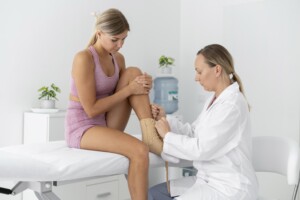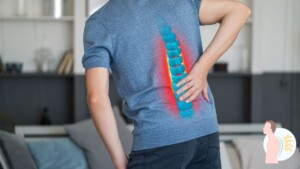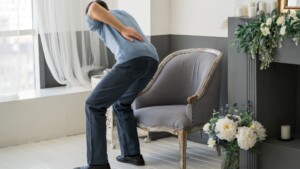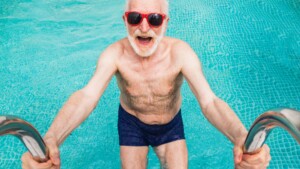Intro
In the world of spinal conditions, distinguishing between spondylolisthesis and spondylosis is crucial for proper diagnosis and treatment. While both may sound similar, understanding the key differences between the two conditions can greatly impact the management of your symptoms and overall quality of life.
Differences Between Spondylolisthesis and Spondylosis
| Feature | Spondylolisthesis | Spondylosis |
| Definition | Forward displacement of a vertebra | General degeneration of the spine |
| Causes | Congenital defects, trauma, aging, repetitive stress | Aging, poor posture, repetitive movements, genetic predisposition |
| Affected Areas | Typically lower back (lumbar spine) | Can affect cervical, thoracic, or lumbar spine |
| Symptoms | Lower back pain, nerve impingement, muscle spasms, radiating leg pain | Chronic pain, stiffness, decreased range of motion, possible nerve compression |
| Diagnosis | X-rays, MRI, CT scans to assess vertebral slippage | X-rays, MRI to detect disc degeneration and bone spurs |
| Treatment | Physical therapy, medications, bracing, surgery (spinal fusion) if severe | Physical therapy, pain management, lifestyle changes, surgery if necessary |
| Prognosis | Can improve with proper treatment, but may require surgery in severe cases | Progressive but manageable with lifestyle changes and treatment |
By unraveling the intricacies of these conditions, patients can make informed decisions about their care and treatment options. With the right knowledge and guidance, navigating the complexities of these spinal conditions becomes more manageable and empowering.
Causes of Spondylolisthesis and Spondylosis
| Factor | Spondylolisthesis | Spondylosis |
| Congenital | Can be caused by genetic predisposition affecting vertebral stability | Genetic factors may contribute to degenerative changes |
| Injury/Trauma | Sports injuries, accidents, or repetitive stress can lead to vertebral slippage | Less commonly caused by trauma, more associated with gradual wear and tear |
| Aging | Wear and tear over time can weaken vertebrae and lead to slippage | Natural degeneration of discs and joints due to aging |
| Posture/Repetitive Movements | Poor posture and repeated stress can contribute | Chronic poor posture and repetitive movements accelerate degeneration |
Symptoms of Spondylolisthesis and Spondylosis
| Symptom | Spondylolisthesis | Spondylosis |
| Pain Location | Lower back pain, may radiate to legs | Neck or back pain, stiffness |
| Nerve Involvement | Can cause nerve compression, leading to numbness, tingling, or weakness in legs | Can cause nerve compression if bone spurs or disc degeneration press on nerves |
| Mobility Issues | Reduced flexibility, difficulty standing for long periods | Decreased range of motion, stiffness |
| Muscle Effects | Spasms and weakness in lower back and legs | Muscle stiffness and discomfort |
Diagnosis of Spondylolisthesis and Spondylosis
| Diagnostic Method | Spondylolisthesis | Spondylosis |
| Medical History & Physical Exam | Evaluates symptoms, range of motion, nerve function | Assesses pain, stiffness, and nerve involvement |
| X-ray | Identifies vertebral slippage | Detects bone spurs and structural changes |
| MRI/CT Scan | Provides detailed images of nerve compression and soft tissues | Shows disc degeneration, spinal canal narrowing |
Treatment Options for Spondylolisthesis and Spondylosis
| Treatment | Spondylolisthesis | Spondylosis |
| Physical Therapy | Strengthens core muscles to support the spine | Improves mobility, strengthens muscles |
| Medications (NSAIDs, muscle relaxants, pain relievers) | Manages pain and inflammation | Reduces pain and inflammation |
| Bracing | Provides support and prevents further slippage | Not typically used |
| Corticosteroid Injections | Less common, but may be used for nerve pain | Provides temporary relief from severe pain |
| Surgery (Spinal Fusion, Decompression) | Stabilizes vertebrae and relieves nerve compression in severe cases | Removes pressure on nerves or stabilizes spine in severe cases |
Recovery and Rehabilitation
| Aspect | Spondylolisthesis | Spondylosis |
| Post-Treatment Care | Physical therapy, gradual activity resumption | Exercise, pain management, ergonomic changes |
| Surgical Recovery | Hospital stay, followed by rehabilitation | Varies based on procedure, physical therapy often recommended |
| Long-Term Management | Regular exercise, maintaining healthy weight | Lifestyle modifications, posture correction |
Preventive Measures and Lifestyle Changes
| Preventive Measure | Benefit |
| Regular Exercise | Strengthens core and spinal muscles to provide support |
| Healthy Weight Maintenance | Reduces pressure on spine |
| Proper Posture | Prevents excessive strain on spinal structures |
| Ergonomic Adjustments | Reduces stress on spine during daily activities |
Conclusion
At Wake Spine and Pain, we understand how spinal conditions like spondylolisthesis and spondylosis can impact your daily life. With the right diagnosis and personalized treatment plan, you can manage your symptoms and regain mobility. Our expert team is dedicated to providing advanced, patient-centered care to help you live pain-free.
Call to Action
Don’t let back or neck pain hold you back any longer. Schedule a consultation with Wake Spine and Pain today and take the first step toward lasting relief. Our specialists are here to create a customized treatment plan tailored to your needs.
📞Give us a call today at (919) 322-1835 or schedule your appointment here.
Contact us now to start your journey to a healthier, pain-free life
FAQs
- Can spondylolisthesis and spondylosis occur together? Yes, it is possible for an individual to have both conditions simultaneously, particularly in older adults who experience both vertebral slippage and spinal degeneration.
- Which condition is more painful? Pain levels vary among individuals, but spondylolisthesis often causes more severe nerve-related symptoms due to vertebral slippage, while spondylosis can lead to chronic discomfort and stiffness.
- Can these conditions be cured completely? While there is no absolute cure, both conditions can be effectively managed with proper treatment, lifestyle changes, and, in severe cases, surgery.
- Is exercise safe for people with these conditions? Yes, low-impact exercises such as swimming, walking, and specific physical therapy routines can help strengthen the spine and reduce symptoms.
References
- American Academy of Orthopaedic Surgeons (AAOS) – Spinal Conditions Guide
- National Institute of Arthritis and Musculoskeletal and Skin Diseases (NIAMS)
- Spine Health Organization – Treatment and Prevention of Spinal Disorders












